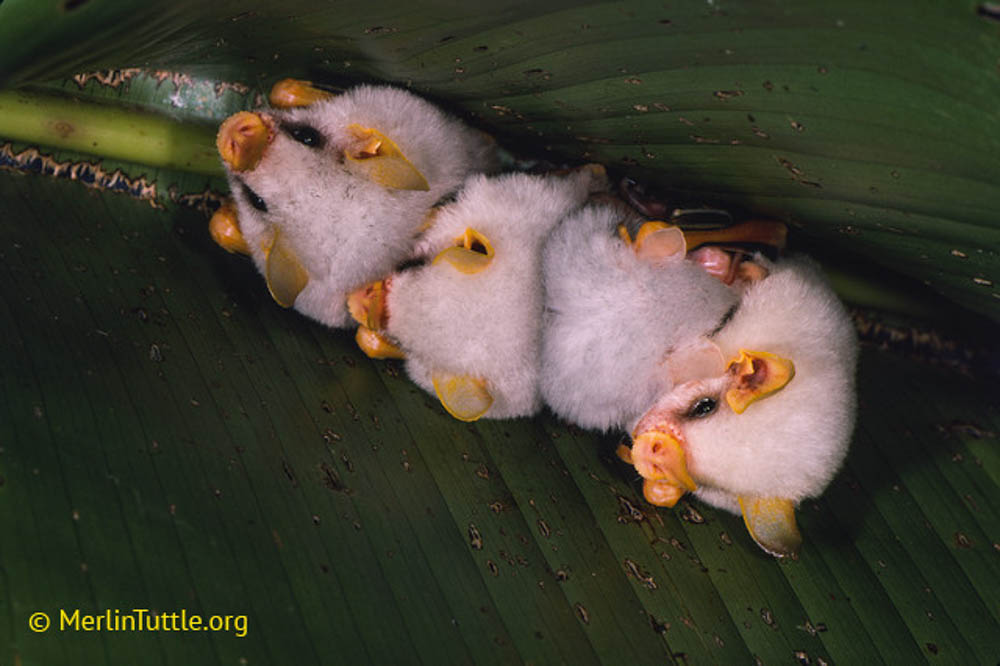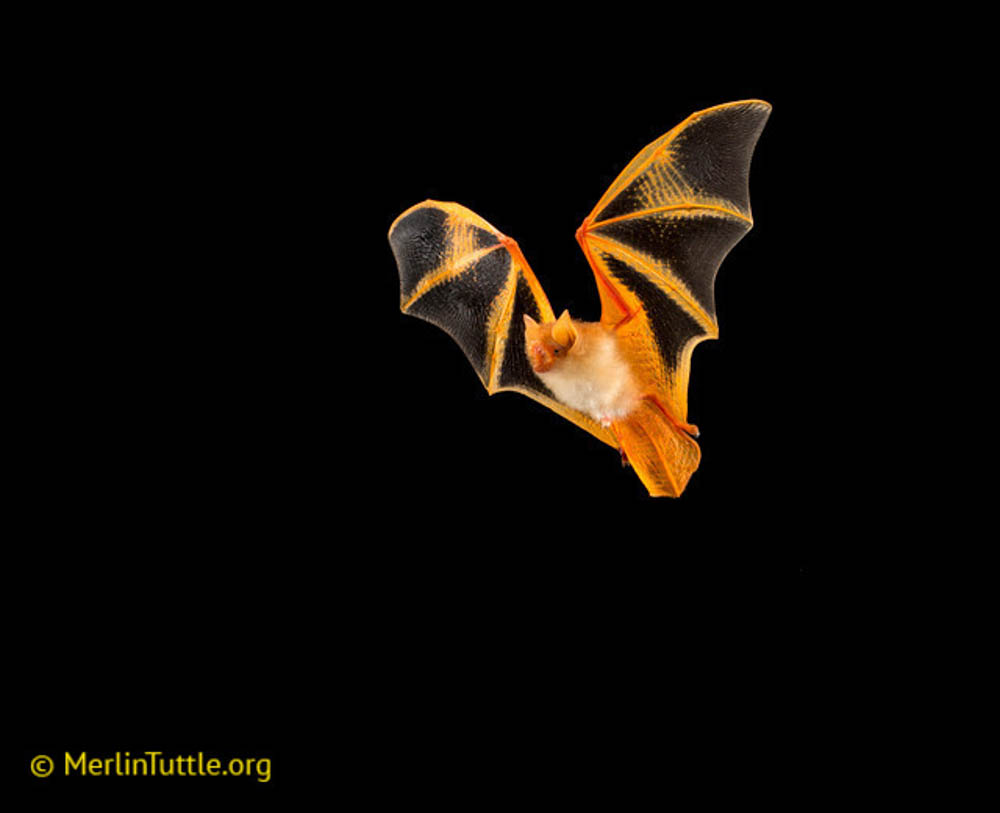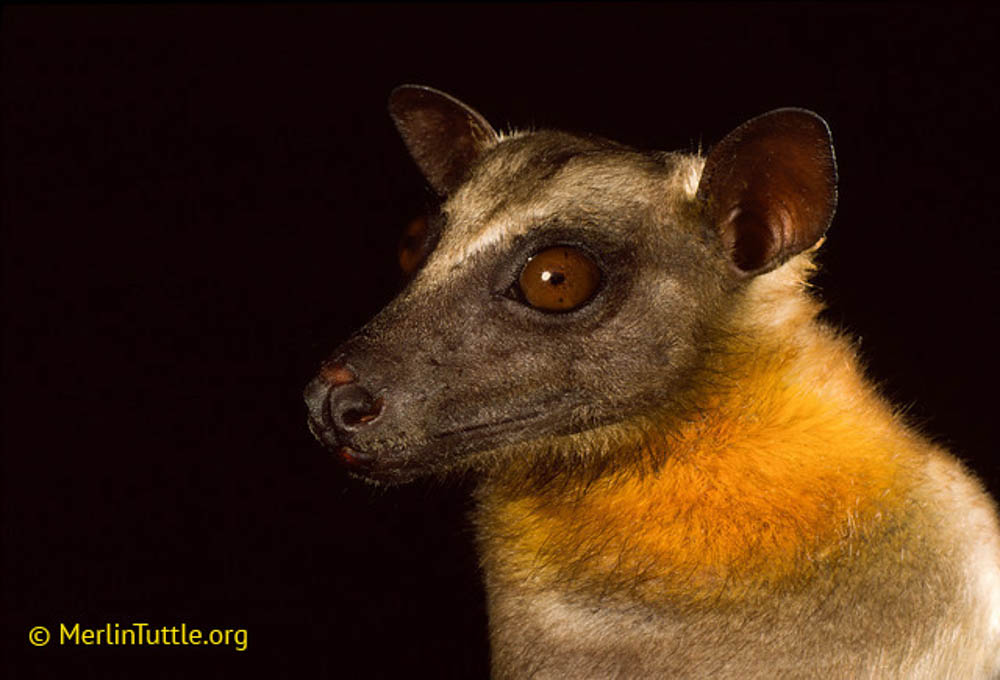Bats Make Good Neighbors: Ten Facts That May Surprise You

What comes to mind when you think of bats? Are the words you associate with them negative or positive? Bats probably won’t win any popularity contests anytime soon and if you’re like many people, much of what you “know” about them probably came from what you’ve seen in the movies, on TV, the news, and in other popular media. Sadly, much of this is based on myths, and leads to misunderstanding, fear, and often, persecution.
Here are a few facts that might just make you look at bats differently:
- Bats are NOT BLIND! They have eyes and can see just like you or me. They can navigate in total darkness through echolocation–they send out a high-pitched signal through their nose or mouth and receive the echo back to “map” their surroundings. Their sonar is so refined that they can detect an object thinner than a human hair.
- Bats are the only true flying mammal, as flying squirrels do not really fly, they simply glide from a higher spot to a lower spot. As their latin name Chiroptera, meaning, “hand wing,” suggests, bats fly with their hands. Between each finger is a thin membrane that forms their wings.

- Bats are not dirty, nor are they flying mice. Bats groom themselves regularly, just like cats and are more closely related to primates and humans than mice.
- They don’t all have rabies; less than one half of one percent carry rabies. (The best way to avoid getting bitten by a bat is to simply leave them alone and not try to handle one, even if you find one sick or injured.)
- Bats are not the cause of coronavirus or other deadly diseases; no proof has ever been found and there are many, many articles citing facts to support this. Biologist Merlin Tuttle, who has been studying bats for over 60 years, and founder of Merlin Tuttle’s Bat Conservationsays, “There is no documentation that Ebola, SARS, MERS, Hendra, or COVID-19 have ever been transmitted from bats to humans, though bats are often presented as the source of human infection.” Sheema Abdul Aziz, PhD in Ecology from the Muséum National d’Histoire Naturelle and Co-founder & President of Rimba, a non-profit group of conservation scientists conducting research on threatened species and ecosystems in Malaysia adds “To this day, bats have not been proven to be the cause of the outbreak. Yet the psychological link between bats and COVID-19 has already been created and solidified in many people’s minds.”
- “Approximately 70 percent of all tropical fruits eaten by humans rely on bats as primary pollinators or seed dispersers in the wild, ranging from bananas and mangoes to peaches, cashews and dates” says Merlin Tuttle. In equatorial regions, they are important seed dispersers.

- For their size, bats are one of the longest living mammals. Some can live up to 40 years! The smallest bat in the world weighs less than a penny and is called the bumblebee bat. The largest bat is called a Flying Fox and has a wingspan of 6 feet.
- Bats do not all live in colonies or caves. Some bats, like the red bat are solitary. They might live in the top of a tree, in a hollow cavity, in the forest, in barns or abandoned buildings, and even under leaves on the forest floor.
- One fifth of all mammals are bats. Most bats–2/3 of them, eat insects or other small invertebrates. Insect-eating bats are essential to a healthy ecosystem. Merlin Tuttle says, “A colony of big brown bats from just one bat house can consume enough cucumber beetles to prevent millions of eggs from being laid on gardens or crops in a single summer. Nationally, bats save US farmers nearly $23 billion annually. Worldwide, insectivorous bats protect a wide range of crops, including rice, corn, cotton, cocoa, coffee, and macadamia nuts.” 1/3 of bats feed on fruit or nectar. One percent eat fish, mice and other small vertebrates. Finally, 3 species of the 1400 feed on blood. These live only in Latin America and have been important in research that has lead to medicine to treat heart patients.
- There are more than 1400 species of bats in the world, with 50 kinds in the United States. North Carolina is home to 17 species of bats, including 3 that are federally endangered and one that is on the federally threatened list. All 17 species that share our yards with us here in NC feed on insects, a fact that should have us all jumping for joy. In one hour an average size bat can eat 1000 mosquito-sized insects, including mosquitoes. Imagine how many bats in a colony of just a few hundred can eat on any given night throughout the spring, summer and fall when they are active. An animal that feeds on mosquitoes—What’s not to love about that?
